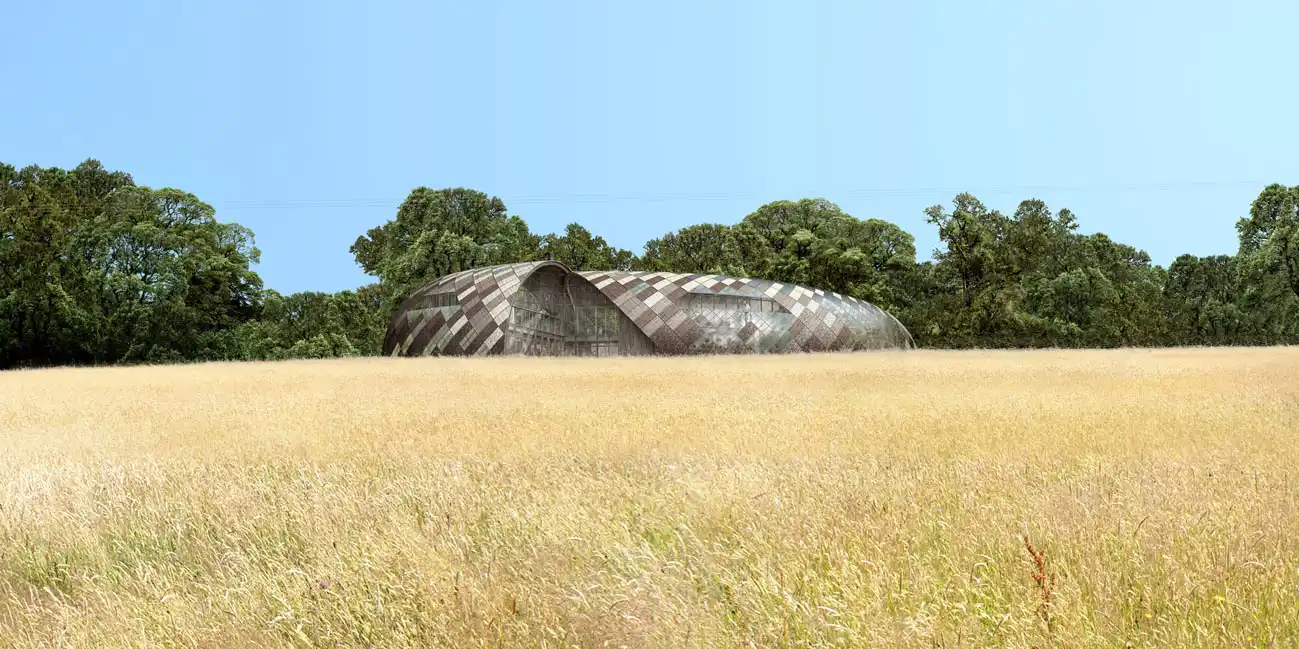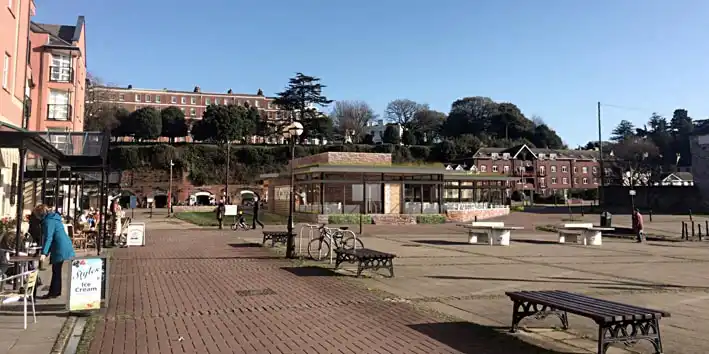Many thanks to Dr Matt Cowley from EAD Ecology, who has provided the below. Matt Cowley is a Design Review Panel member, attending Design Review Panels across the South West; in Cornwall, Devon (both Plymouth and Exeter), Somerset, Dorset, Wiltshire and Swindon. For more information on Matt Cowley please click here ...
"The concept of ‘multi-functional’ greenspace is well-established. We think of the function of greenspace in terms of tangible benefits and ‘services’: the role of trees in improving air quality, reducing noise pollution and having a cooling effect; swales and ponds to manage flood risk; retained and new vegetation to create focal points, amenity resources and character areas within new development. As a professional ecologist, it is often my role to advise on the use of greenspace in development to create or retain habitat for wildlife, thus meeting policy aspirations for development that achieves ‘biodiversity gain’ or to fulfil legal requirements in relation to maintaining populations of protected species.
In addition to these functions, there is increasingly persuasive evidence that shows that good quality greenspace and nature in general can have a positive effect on how people feel – it can reduce stress, improve well-being and provide the proverbial natural high. I have been keen to investigate this further. What evidence is there to show that greenspace and nature can improve wellbeing? What mechanisms can explain it and what are the implications for urban design?
A good place to start is a recent study from a research team at the University of Exeter Medical School1. Using questionnaire data from the British Household Panel Survey, the researchers looked at two groups of people, those who had moved to ‘greener’ urban areas and those who had relocated to less green urban areas. They found that, on average, those who moved to ‘greener’ areas experienced an improvement in mental health, including life satisfaction scores showing significantly higher levels of wellbeing and lower levels of mental distress. These effects were sustained for at least three years after they moved and were controlled to remove the effect of other factors likely to affect mental health over time, such as income, employment and education, as well as factors related to personality. The study showed a converse effect for people relocating to more built-up areas, with declines in mental health demonstrated.
Bluebell Wood - Greenspaces and nature can bring health benefits
This study is not an isolated example; many previous studies have shown similar effects2, 3, 4, 5. It is not just related to greenspace, blue-space such as canals, lakes and rivers has also been found to have a beneficial effect6.
In these studies, green and blue spaces are defined in a variety of ways, including parks, allotments, tree-lined streets, canals, rivers and so on. As a result, possible mechanisms to explain the effect are broad. One of the most obvious is physical activity: people living near good quality green space have been found to be more active. Increased activity provides multiple health benefits, including mental health. One of many studies looking at such mechanisms was recently undertaken in New Zealand7. This found that even after controlling for individual socio-economic factors, gender, age and smoking behaviour, residents of the greenest areas had the lowest risk of poor mental health and for every 15% more of greenspace available, the risk of cardiovascular disease went down in all local areas.
Another mechanism that has been cited is related to social factors. Local greenspaces can provide a place for community activities and social interaction and therefore help to reduce social isolation8.
These mechanisms make intuitive sense – if you have good quality, attractive greenspace close to your home you are more likely to go outside, to exercise and to come into contact with other people; all likely to be positive factors for good health. This is fine, but does it miss a further dimension? Is there intrinsic enjoyment and benefit that can be gained purely from contact with nature - above and beyond the positive effect of exercise and social contact?
A study published earlier this year considers this additional dimension9. Researchers from the University of Exeter, the British Trust for Ornithology and the University of Queensland looked at the role that components of nature play in our mental well-being. Using a questionnaire survey of over 1000 residents of Milton Keynes, Luton and Bedford, the study found that people living in neighbourhoods with more birds, shrubs and trees were less likely to suffer from depression, anxiety and stress. This positive association applied even after controlling for variation in neighbourhood deprivation, house-hold income, age and a wide range of other socioeconomic factors.
Garden Birds - Research has shown that contact with nature, including common garden birds, can improve well-being.
In the study, common types of birds including blackbirds, robins, blue tits and crows were seen by residents. The study did not find a relationship between the species of birds and mental health, but rather the number of birds they could see from their windows, in the garden or in their neighbourhood on a daily basis. The authors concluded that it was interacting with birds, not the specific birds, that provided well-being benefits.
The results of the study seem to be consistent with earlier work; for example, research has shown that more bird species in the environment and watching birds was good for people’s psychological well-being10, 11 and the presence of vegetation in urban areas reduced stress and promoted restoration from mental fatigue 10, 12. Listening to bird song has also been shown to contribute towards stress recovery 13.
These positive effects, that are independent of actual physical activity, are consistent with a well-known study from the 1980s, which showed that patients’ in hospital had improved recovery from surgery if they had views of greenspace through hospital windows 14. The mechanisms and biological pathways to explain these effects are complicated, but documented physiological responses to exposure to greenspace include lower cortisol concentrations, pulse rates and blood pressure15.
So, all together, the research seems to be pointing to there being something about nature and natural environments that make people feel good, beyond the well-documented benefits associated with outdoor activity. So, what does this mean for urban designers? There are clear macro policy implications – particularly when you consider that in western nations, poor mental health is one of the biggest public-health problems16.
In this country, the influence of this research on policy can be already be seen in publications such as Natural England’s ‘Accessible Natural Greenspace Standard’17. The challenge is squaring such standards with the need for new homes and policy that requires efficient use of available land.
When considering the implications, it is worth noting that positive benefits that have been identified are not just related to substantial areas of greenspace, such as parks or allotments. Measurable benefits were also gained through tree-lined streets, views of greenery and through contact with nature – things that can be delivered in new development without necessitating major land take. This reinforces the importance of retention and creation of wildlife habitats within development, even if small-scale. Wildlife habitats such as native hedgerows and trees, wildflower margins and ponds are easy to create, can provide a natural form and function in a relatively short-time and do not require large areas of public realm. The benefits of contact with nature, including birds, points to the value of including habitat for declining birds such as house martins, house sparrows and swifts in new buildings.
Wildflower Grassland - Wildflower grassland is easy to create and can provide wildlife-rich habitat within urban development in a short-time.
In relation to habitat retention, in the South West, many ‘green field’ development sites already include habitats of ecological value, such as small areas of woodland, ponds, and hedgerow networks including features such as mature trees, hedgebanks and ditches. What better place to start when designing your green-infrastructure? Such features provide an opportunity to bring residents into contact with nature and provide the type of benefits to well-being that have been documented in the research cited. The advantages of incorporating features such as green walls and green roofs into architectural design may extend beyond simply enhancing the appearance of buildings and improve the health and well-being of the building’s users. The evidence shows that biodiverse greenspace makes towns and cities happier and healthy places to live – another reason to ‘design with nature’."
References
Alcock I, White MP, Wheeler BW, Fleming LE, Depledge MH. 2014. Longitudinal Effects on Mental Health of Moving to Greener and Less Green Urban Areas. Environ Sci Technol. 48, 1247-1255.
Mitchell R, Popham F. 2008. Effect of exposure to natural environment on health inequalities: an observational population study. Lancet. 372, 1655-1660.
Thompson CW, Roe J, Aspinall P, Mitchell R, Clow A, Miller D. 2012. More green space is linked to less stress in deprived communities: evidence from salivary cortisol patterns. Landscape Urban Plann. 105, 221–229.
White MP, Alcock I, Wheeler BW, Depledge MH. 2013. Would you be happier living in a greener urban area? A fixed-effects analysis of panel data. Psychological Science. 24, 920-928.
Beyer KMM, Kaltenbach A, Szabo A, Bogar S, Nieto FJ, Malecki KM. 2014. Exposure to neighbourhood green space and mental health: Evidence from the survey of the health of Wisconsin. Int. J. Environ. Res. Public Health. 11, 3453–3472.
White M, Smith A, Humphryes K, Pahl S, Snelling D, Depledge M. 2010. Blue space: The importance of water for preference, affect and restorativeness ratings of natural and built sciences. Journal of Environmental Psychology. 30, 482-493.
Richardson EA, Pearce J, Mitchell R, Kingham S. 2013. Role of physical activity in the relationship between urban green space and health. Public Health. 127, 318-324.
Sullivan S, Kuo F, DePooter, S. 2014. The Fruit of Urban Nature: Vital Neighbourhood Spaces. Environment and Behaviour. 36, 678-700.
Cox DTC, Shanahan DF, Hudson HL, Plummer KE, Siriwardena GM, Fuller KA, Hancock S, Gaston KJ. 2017. Doses of Neighbourhood Nature: The Benefits for Mental Health of Living with Nature. Bioscience. 147, 67, 147-155.
Fuller RA, Irvine KN, Devine-Wright P, Warren PH, Gaston KJ. 2007. Psychological benefits of greenspace increase with biodiversity. Biology Letters. 3, 390–394.
Cox DTC, Gaston KJ. 2015. Likeability of garden birds: Importance of species knowledge and richness in connecting people to nature. PLOS ONE. 10 (art. e0141505).
Dallimer M, Irvine KN, Skinner AMJ, Davies ZG, Rouquette JR, Maltby LL, Warren PH, Armsworth PR, Gaston KJ. 2012. Biodiversity and the feel-good factor: Understanding associations between self-reported human well-being and species richness. BioScience. 62, 47–55
Ratcliffe E, Gatersleben B, Sowden PT. 2013. Bird sounds and their contributions to perceived attention restoration and stress recovery. Journal of Environmental Psychology. 36, 221–228
Ulrich RS. 1984. View through a window may influence recovery from surgery. Science 224, 420-421.
Park BJ, Tsunetsugu Y, Kasetani T, Kagawa T, Miyazaki Y. 2010. The physiological effects of Shinrin-yoku (taking in the forest atmosphere or forest bathing): evidence from field experiments in 24 forests across Japan. Environ Health Prev Med. 15, 18-26.
The Organisation for Economic Co-operation and Development calculates that mental-health conditions such as depression cost the United Kingdom £70 billion annually in health-care spending and lost productivity.
Natural England. 2010. ‘Nature Nearby’ Accessible Natural Greenspace Guidance. Natural England, Peterborough.
EAD Ecology is a leading firm of ecological consultants. Based in Exeter, the company specialises in ecological survey and assessment to inform design, planning and management. The company currently employs over 25 ecologists and works for private and public-sector clients across the UK and overseas. The company was formed in 2003 and is owned and managed by Matt Jones and Matt Cowley.

















